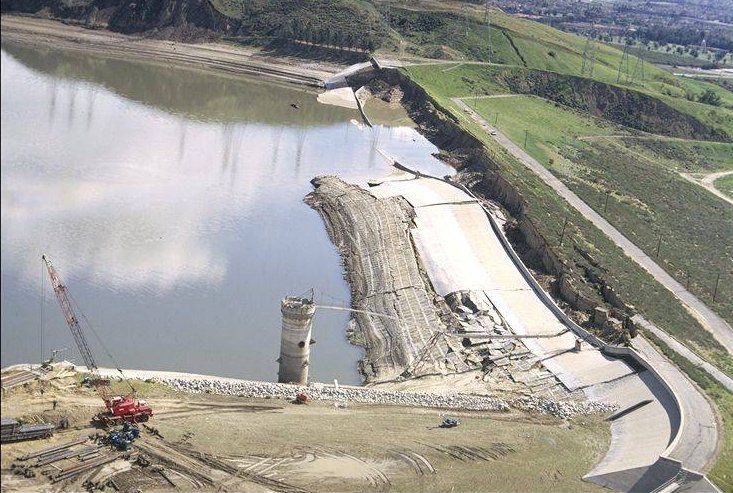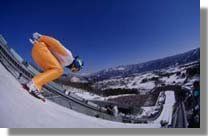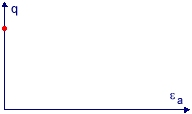
Liquefaction is a phenomenon in which the strength and stiffness of a soil is reduced by earthquake shaking or other rapid loading. Liquefaction and related phenomena have been responsible for tremendous amounts of damage in historical earthquakes around the world.

Liquefaction occurs in saturated soils, that is, soils in which the space between individual particles is completely filled with water. This water exerts a pressure on the soil particles that influences how tightly the particles themselves are pressed together. Prior to an earthquake, the water pressure is relatively low. However, earthquake shaking can cause the water pressure to increase to the point where the soil particles can readily move with respect to each other.


Schematic behavior of sand grains in a soil deposit during liquefaction. The blue column represents the pore water pressure.
Earthquake shaking often triggers this increase in water pressure, but construction related activities such as blasting can also cause an increase in water pressure.
Overturned apartment complex, Niigata 1964 When liquefaction occurs, the strength of the soil decreases and, the ability of a soil deposit to support foundations for buildings and bridges is reduced as seen in the photo (SC) of the overturned apartment complex buildings in Niigata in 1964.
The type of ground failure shown above can be simulated in the laboratory,as seen in the video.
Lateral spread, Kobe earthquake 1995
San Fernando dam Liquefied soil also exerts higher pressure on retaining walls,which can cause them to tilt or slide. This movement can cause settlement of the retained soil and destruction of structures on the ground surface (left, GH)
Increased water pressure can also trigger landslides and cause the collapse of dams. Lower San Fernando dam (left, SC) suffered an underwater slide during the San Fernando earthquake, 1971. Fortunately, the dam barely avoided collapse, thereby preventing a potential disaster of flooding of the heavily populated areas below the dam.
| Flow Liquefaction & Cyclic Mobility |
The term liquefaction has actually been used to describe a number of related phenomena. Because the phenomena can have similar effects, it can be difficult to distinguish between them. The mechanisms causing them, however, are different. These phenomena can be divided into two main categories: flow liquefaction and cyclic mobility.Flow Liquefaction Flow liquefaction is a phenomenon in which the static equilibrium is destroyed by static or dynamic loads in a soil deposit with low residual strength. Residual strength is the strength of a liquefied soil. Static loading, for example, can be applied by new buildings on a slope that exert additional forces on the soil beneath the foundations. Earthquakes, blasting, and pile driving are all example of dynamic loads that could trigger flow liquefaction. Once triggered, the strength of a soil susceptible to flow liquefaction is no longer sufficient to withstand the static stresses that were acting on the soil before the disturbance. |
  |
| An analogy can be seen in the picture above, where the static stability of a ski jumper in the starting gate is disturbed when the jumper pushes himself from the start seat. After this relatively small disturbance, the static driving force caused by gravity, being greater than the frictional resisting force between the ski and snow, causes the skier to accelerate down the ramp. The path that brings the ski jumper to an unstable state is analogous to the static or dynamic disturbance that triggers flow liquefaction – in both cases, a relatively small disturbance proceeds an instability that allows gravity to take over and produce large, rapid movements. Failures caused by flow liquefaction are often characterized by large and rapid movements which can produce the type of disastrous effects experienced by the Kawagishi-cho apartment buildings, which suffered a remarkable bearing capacity failure during the Niigata Earthquake 1964. The Turnagain Heights landslide, Alaska Earthquake 1964 which is thought to be triggered by liquefaction of sand lenses in the 130-acre slide area provides another example of flow liquefaction. Sheffield Dam suffered a flow failure triggered by the Santa Barbara Earthquake in 1925. A 300 ft section (of the 720 feet long dam) moved as much as 100 ft downstream. The dam consisted mainly of silty sands and sandy silts excavated from the reservoir and compacted by routing construction equipment over the fill (Seed, 1968). As these case histories illustrate, flow failures, can involve the flow of considerable volumes of material, which undergoes very large movements that are actually driven by static stresses. As described in the state criteria section, the disturbance needed to trigger flow liquefaction can, in some instances, be very small. Read more about the initiation of flow liquefaction. Cyclic Mobility Cyclic mobility is a liquefaction phenomenon, triggered by cyclic loading, occuring in soil deposits with static shear stresses lower than the soil strength. Deformations due to cyclic mobility develop incrementally because of static and dynamic stresses that exist during an earthquake. Lateral spreading, a common result of cyclic mobility, can occur on gently sloping and on flat ground close to rivers and lakes. The 1976 Guatemala earthquake caused lateral spreading along the Motagua river. Observe the cracks parallel to the river in the picture to the right. On level ground, the high porewater pressure caused by liquefaction can cause porewater to flow rapidly to the ground surface. This flow can occur both during and after an earthquake. If the flowing porewater rises quickly enough, it can carry sand particles through cracks up to the surface, where they are deposited in the form of sand volcanoes or sand boils. These features can often be observed at sites that have been affected by liquefaction, such as in the field along Hwy 98 during the 1979 El Centro earthquake shown above. |







